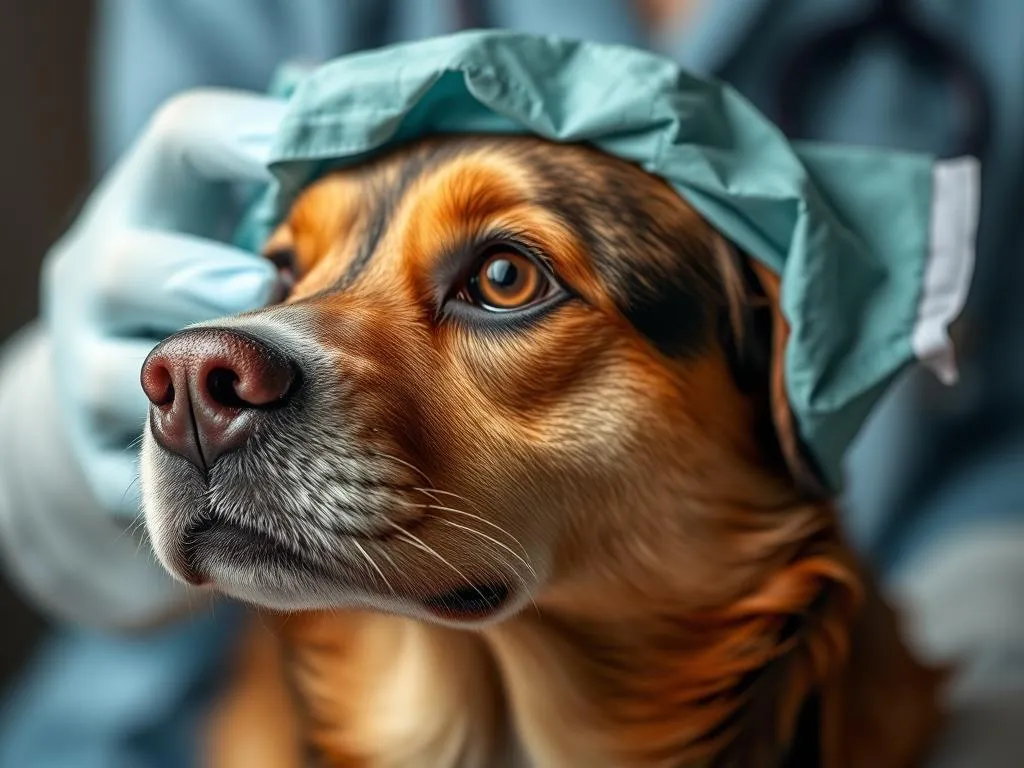
Introduction
Maintaining your dog’s health is paramount for their happiness and longevity. Regular health care not only keeps your furry friend in top condition but also helps in preventing common health issues that can arise over time. Among these issues, eye infections are a significant concern for many dog owners.
Eye infections in dogs can lead to severe complications if not treated promptly. Understanding the types of infections, symptoms, and treatment options is crucial for any responsible pet owner. This article will delve into the vet costs for dog eye infection surgery, providing you with insights on managing your dog’s health care effectively.
Understanding Dog Eye Infections
Types of Eye Infections
Dog eye infections can manifest in several forms, each with its own set of causes and treatment options. Here are the most common types:
- Conjunctivitis (Pink Eye): This condition involves inflammation of the conjunctiva, the membrane covering the eye. It can be caused by allergies, infections, or irritants.
- Keratitis: An inflammation of the cornea, keratitis can result from infections, trauma, or foreign bodies.
- Uveitis: This serious condition affects the uvea (the middle layer of the eye) and can lead to blindness if not addressed.
- Corneal Ulcers: These are open sores on the cornea, often resulting from injury, infection, or underlying health issues.
Symptoms of Eye Infections
Recognizing the symptoms of eye infections is essential for prompt treatment. Common signs include:
- Redness and swelling: Infected eyes may appear red and inflamed.
- Discharge: This can be watery or pus-like, indicating an infection.
- Squinting or pawing at the eye: Dogs may try to alleviate discomfort by squinting or using their paws to scratch.
- Cloudiness or change in color of the eye: Any noticeable change in appearance should prompt a veterinary visit.
Causes of Eye Infections
Understanding what causes eye infections can help in prevention. Common causes include:
- Allergies: Environmental allergens can lead to irritation and infections.
- Bacterial or viral infections: Just like humans, dogs can suffer from infections caused by various pathogens.
- Foreign bodies: Dust, grass awns, or other objects can irritate the eye and lead to infections.
- Underlying health conditions: Conditions such as diabetes can make dogs more susceptible to infections.
Diagnosis of Eye Infections
Veterinary Examination
If you suspect your dog has an eye infection, a professional evaluation is crucial. During a veterinary examination, the vet will typically:
- Assess the eye’s appearance: Look for redness, discharge, and swelling.
- Check for foreign bodies: Ensure there are no irritants in the eye.
- Evaluate the dog’s overall health: This helps determine if there are any underlying conditions contributing to the infection.
Diagnostic Tests
In some cases, further diagnostic tests may be required to ascertain the cause of the infection:
- Fluorescein staining: This test helps identify corneal ulcers by applying a special dye to the eye.
- Tear production tests: These measure the amount of tears produced, which can indicate dry eye conditions.
- Blood tests: These can help identify underlying health conditions that may predispose the dog to eye infections.
Treatment Options for Eye Infections
Medical Treatments
The first line of defense against dog eye infections usually involves medical treatments:
- Antibiotic or antifungal medications: Depending on the cause, your vet may prescribe medication to combat bacterial or fungal infections.
- Anti-inflammatory drugs: These can help reduce swelling and discomfort in the eye.
- Eye drops and ointments: These topical treatments are often necessary for managing symptoms and promoting healing.
Surgical Interventions
In more severe cases, surgery may be necessary:
- When surgery is necessary: If the infection has caused significant damage or if there are underlying abnormalities, surgical intervention may be required.
- Types of surgeries for severe cases: Common procedures include corneal repair surgeries or more advanced techniques to address uveitis or other serious conditions.
Home Care and Management
Post-treatment care is just as important. Some home care tips include:
- Cleaning and caring for the affected eye: Gently cleaning the eye area with a damp cloth can help manage discharge.
- Monitoring symptoms and follow-up care: Keep an eye on your dog’s condition and return to the vet if symptoms worsen or do not improve.
Costs Associated with Dog Eye Infection Surgery
Factors Influencing Vet Costs
Understanding the vet costs for dog eye infection surgery involves considering several factors:
- Location and clinic reputation: Prices can vary significantly depending on where you live and the clinic’s reputation.
- Severity of the infection: More severe infections that require extensive treatment will naturally cost more.
- Type of surgery required: Different surgical procedures come with different price tags.
Average Cost Breakdown
While costs can vary, here’s a general breakdown of what you might expect:
- Consultation fees: Initial vet visits can range from $50 to $150.
- Diagnostic tests: These can add anywhere from $50 to $500, depending on the complexity.
- Surgical procedure costs: Eye surgery can range from $500 to over $2,000, based on the severity and type of surgery.
- Post-operative care and medications: Expect to spend an additional $100 to $500 for follow-up visits and medications.
Financial Considerations
Managing costs effectively is essential for pet owners:
- Pet insurance coverage: Having insurance can significantly reduce out-of-pocket expenses for surgeries and treatments.
- Payment plans and financing options: Many veterinary clinics offer payment plans or financing options to help manage costs.
Preventive Measures for Eye Health
Routine Eye Care
Taking proactive steps can prevent many eye health issues:
- Regular check-ups with the vet: Routine examinations can catch potential problems early.
- Cleaning routines for the dog’s eyes: Regularly wiping the eye area can help prevent infections.
Environmental Considerations
Creating a safe environment for your dog is vital:
- Keeping the dog’s environment clean and safe: Regular cleaning can minimize exposure to allergens and irritants.
- Reducing exposure to potential allergens and irritants: Be mindful of your dog’s environment, particularly during allergy seasons.
Nutrition and Overall Health
A balanced diet plays a crucial role in maintaining your dog’s overall health, including eye health:
- Importance of a balanced diet for eye health: Providing high-quality food ensures your dog gets the necessary nutrients for overall wellness.
- Supplements that may promote eye health: Certain vitamins and supplements can support eye health; consult your vet for recommendations.
Conclusion
Understanding dog eye infections and their associated costs is vital for every dog owner. Prompt recognition of symptoms, timely veterinary care, and a proactive approach to eye health can prevent serious complications. While vet costs for dog eye infection surgery can be significant, being informed about treatment options and preventive measures can help you manage your dog’s health care effectively. Always consult your veterinarian for any eye-related issues to ensure your furry friend remains healthy and happy.
FAQs
What are the signs of a serious eye infection?
Signs of a serious eye infection may include severe swelling, excessive discharge, cloudiness, persistent squinting, and signs of pain such as whining or pawing at the eye.
How can I prevent eye infections in my dog?
Preventing eye infections involves regular check-ups, maintaining a clean environment, minimizing exposure to allergens, and ensuring your dog’s overall health through a balanced diet.
What should I do if my dog has an eye injury?
If your dog has an eye injury, it’s essential to seek veterinary care immediately. Do not attempt to treat the injury at home, as this could worsen the situation.
How often should I take my dog to the vet for check-ups?
Most veterinarians recommend annual check-ups for healthy adult dogs, but senior dogs or those with existing health issues may require more frequent visits. Always consult your vet for personalized advice.









